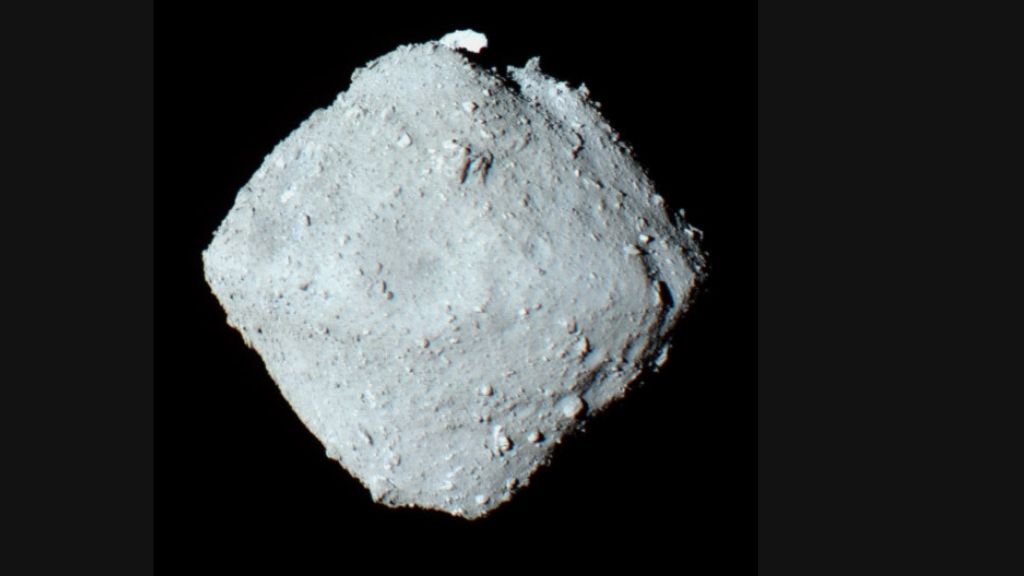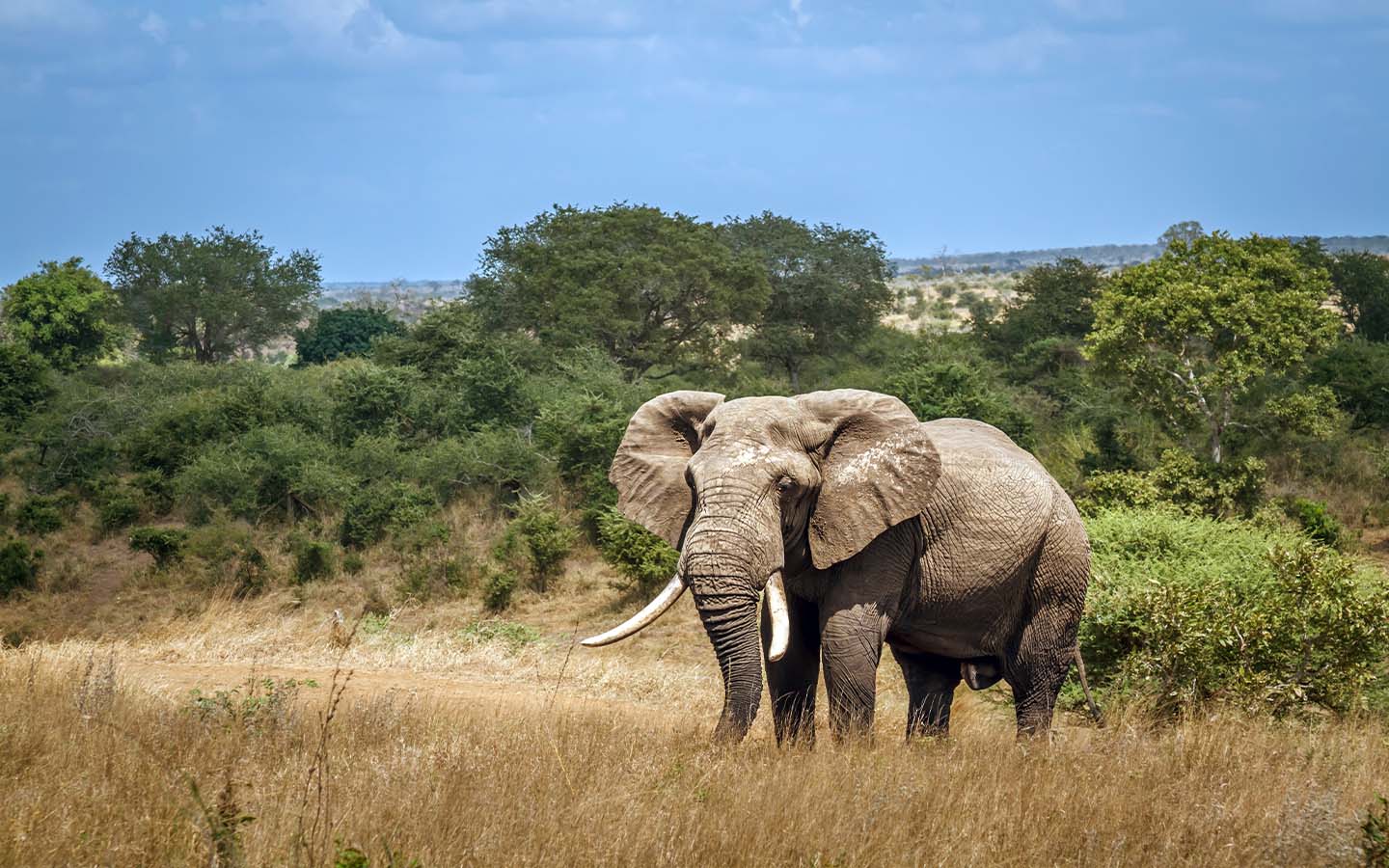‘A genuine surprise’: Near-Earth asteroid Ryugu once had ‘flowing water’ that transformed its insides
By Harry Baker
Copyright livescience

Skip to main content
Close main menu
Live Science
Sign up to our newsletter
View Profile
Search Live Science
Planet Earth
Archaeology
Physics & Math
Human Behavior
Science news
Life’s Little Mysteries
Science quizzes
Newsletters
Story archive
COVID vaccine poll
Ant clones members of another species
JWST takes best image yet
Science history: Gravitational waves detected
Best star projecter
Don’t miss these
Bennu sample contains dust older than the solar system itself
Cataclysmic crash with neighboring planet may be the reason there’s life on Earth today, new studies hint
NASA reveals the dwarf planet Ceres had a hidden ‘energy source’ that may have sparked alien life
If aliens existed on Mars 3.7 billion years ago, they would have needed umbrellas
Extraterrestrial Life
Cosmic rays could help support alien life on worlds outside the ‘Goldilocks zone’
Mystery of Mars’ missing water could be solved by the planet’s tipsy tilt
Giant space ‘boulders’ unleashed by NASA’s DART mission aren’t behaving as expected, revealing hidden risks of deflecting asteroids
New ‘quasi-moon’ discovered in Earth orbit may have been hiding there for decades
Mercury’s ‘missing’ meteorites may have finally been found on Earth
Dozens of mysterious blobs discovered inside Mars may be the remnants of ‘failed planets’
Scientists scan famous ‘Earthrise’ crater on mission to find alien life in our solar system
The Rubin Observatory found 2,104 asteroids in just a few days. It could soon find millions more
‘Incredibly exciting’: NASA claims it’s found the ‘clearest sign’ yet of past life on Mars
James Webb telescope images reveal there’s something strange with interstellar comet 3I/ATLAS
When did our solar system’s planets form? Discovery of tiny meteorite may challenge the timeline
‘A genuine surprise’: Near-Earth asteroid Ryugu once had ‘flowing water’ that transformed its insides
Harry Baker
16 September 2025
A new analysis of asteroid Ryugu hints that the “potentially hazardous” space rock once had flowing water in its core, possibly leftover from the impact that created it.
When you purchase through links on our site, we may earn an affiliate commission. Here’s how it works.
A close-up image of asteroid Ryugu. A new analysis of samples from the space rock hints that flowing water once coursed through its interior.
(Image credit: ISAS/JAXA, CC BY 4.0 , via Wikimedia Commons)
Scientists in Japan now believe that liquid water once flowed through the heart of the near-Earth asteroid Ryugu, after researchers detected something unusual in the samples of the space rock that were returned to our planet five years ago.
The surprising findings also have potential implications for how Earth acquired its own water, the researchers say.
162173 Ryugu is a roughly 3,000-foot-wide (900 meter) asteroid that orbits the sun every 474 days on a trajectory that frequently overlaps with Earth’s. It is unlikely to ever hit our planet, but it is still large enough and comes close enough to us to be considered “potentially hazardous” by NASA.
You may like
Bennu sample contains dust older than the solar system itself
Cataclysmic crash with neighboring planet may be the reason there’s life on Earth today, new studies hint
NASA reveals the dwarf planet Ceres had a hidden ‘energy source’ that may have sparked alien life
Ryugu was visited by Japan’s Hayabusa2 mission between 2018 and 2019, which deployed a probe that landed on the spinning top-shape space rock and collected samples that were later returned to Earth in December 2020.
In a new study, published Sept. 10 in the journal Nature, researchers unearthed chemical irregularities within these samples, which they say can currently be explained only by the historic presence of flowing water within the asteroid.
“We found that Ryugu preserved a pristine record of water activity,” study lead author Tsuyoshi Iizuka, a geochemist at the University of Tokyo in Japan, said in a statement. There is also “evidence that fluids moved through its rocks,” he added. “It was a genuine surprise!”
Related: Key building block for life discovered on distant asteroid Ryugu — and it could explain how life on Earth began
Sign up for the Live Science daily newsletter now
Get the world’s most fascinating discoveries delivered straight to your inbox.
Contact me with news and offers from other Future brandsReceive email from us on behalf of our trusted partners or sponsorsBy submitting your information you agree to the Terms & Conditions and Privacy Policy and are aged 16 or over.
The new findings emerged after the team analyzed the radioactive isotopes — rare versions of elements with an altered atomic mass — of lutetium (Lu) and hafnium (Hf) within the samples.
Lu-176 naturally decays into Hf-176 via beta decay, in which an element spits out charged subatomic particles, such as electrons or positrons, transforming them into something else. By working out the ratio of Lu-176 to Hf-176 and comparing it to the half life of Lu-176 — the time taken for half a sample of the isotope to naturally decay — the team aimed to work out how old the samples were.
But when they carried out their analysis, the researchers found that there was far too much Hf-176 in the samples. The researchers argue that the only thing that could properly explain this result was that ancient liquid water had washed away a majority of Lu-176 within the samples, which could have started happening shortly after Ryugu was born.
You may like
Bennu sample contains dust older than the solar system itself
Cataclysmic crash with neighboring planet may be the reason there’s life on Earth today, new studies hint
NASA reveals the dwarf planet Ceres had a hidden ‘energy source’ that may have sparked alien life
These bits of rock and dust were gathered from the near-Earth asteroid Ryugu by the spacecraft Hayabusa2 on 2019. (Image credit: Yada, et al.; Nature Astronomy)
A watery past
“The most likely trigger [for the water] was an impact on a larger asteroid parent of Ryugu, which fractured the rock and melted buried ice, allowing liquid water to percolate through the body,” Izuka said.
Recent analysis from the James Webb Space Telescope (JWST) had suggested that Ryugu’s parent asteroid may have also spawned the asteroid Bennu, which was visited by NASA’s OSIRIS-REx mission that later returned samples of the asteroid to Earth in September 2023. However, similar signs of flowing water have not been seen within Bennu’s samples so far, creating uncertainty about the asteroids’ respective origins.
Given that Ryugu likely had flowing water, the researchers also believe that its parent asteroid may have contained ice for at least a billion years after the solar system was formed, which is far longer than most asteroids were thought to be able to hold onto their water.
“This changes how we think about the long-term fate of water in asteroids,” Izuka said. “The water hung around for a long time and was not exhausted so quickly as thought.”
RELATED STORIES
—Samples of ‘alien’ asteroid Ryugu are crawling with life — from Earth
—’Building blocks of life’ recovered from asteroid Ryugu are older than the solar system itself
—We may finally know why spinning-top asteroid Ryugu has such a weird shape
It is widely accepted that a majority of Earth’s water likely came from impacts with asteroids, comets or other planetesimals in the early days of the solar system. The new findings hint that asteroids could have played a much larger role in this process than previously thought, potentially delivering up to three times more water to our planet than expected, the researchers claim.
The study team is now planning to analyze veins of phosphate within the samples, which could pin down a more accurate age for the water that flowed through Ryugu, and look more closely at the isotopes from asteroid Bennu to see if it too has signs of flowing water, according to Live Science’s sister site Space.com.
Solar System
Harry Baker
Social Links Navigation
Senior Staff Writer
Harry is a U.K.-based senior staff writer at Live Science. He studied marine biology at the University of Exeter before training to become a journalist. He covers a wide range of topics including space exploration, planetary science, space weather, climate change, animal behavior and paleontology. His recent work on the solar maximum won “best space submission” at the 2024 Aerospace Media Awards and was shortlisted in the “top scoop” category at the NCTJ Awards for Excellence in 2023. He also writes Live Science’s weekly Earth from space series.
You must confirm your public display name before commenting
Please logout and then login again, you will then be prompted to enter your display name.
Bennu sample contains dust older than the solar system itself
Cataclysmic crash with neighboring planet may be the reason there’s life on Earth today, new studies hint
NASA reveals the dwarf planet Ceres had a hidden ‘energy source’ that may have sparked alien life
If aliens existed on Mars 3.7 billion years ago, they would have needed umbrellas
Cosmic rays could help support alien life on worlds outside the ‘Goldilocks zone’
Mystery of Mars’ missing water could be solved by the planet’s tipsy tilt
Latest in Asteroids
Asteroid Apophis flyby will be ‘once in a millennium’ opportunity for skywatchers and scientists
Newly discovered bus-size asteroid will zoom close past Earth today — and will not return for exactly 100 years
Bennu sample contains dust older than the solar system itself
Giant space ‘boulders’ unleashed by NASA’s DART mission aren’t behaving as expected, revealing hidden risks of deflecting asteroids
Astronomers spot potential ‘interstellar visitor’ shooting through the solar system toward Earth
‘City killer’ asteroid 2024 YR4 could shower Earth with ‘bullet-like’ meteors if it hits the moon in 2032
Latest in News
World’s oldest mummies were smoke-dried 10,000 years ago in China and Southeast Asia, researchers find
Asteroid Ryugu once had ‘flowing water’, shocking analysis hints
1,900-year-old oil lamp that provided ‘light in the journey to the afterlife’ found in Roman cemetery in the Netherlands
Scientists measure the ‘natal kick’ that sent a baby black hole careening through space for the first time
‘Russian nesting doll’ virus hides inside a deadly fungus, making it even more dangerous to people
Diet change could make brain cancer easier to treat, early study hints
LATEST ARTICLES
Volcanic ‘googly eyes’ stare into space from skull-like peninsula
World’s oldest mummies were smoke-dried 10,000 years ago in China and Southeast Asia, researchers find
1,900-year-old oil lamp that provided ‘light in the journey to the afterlife’ found in Roman cemetery in the Netherlands
Scientists measure the ‘natal kick’ that sent a baby black hole careening through space for the first time
‘Russian nesting doll’ virus hides inside a deadly fungus, making it even more dangerous to people
Live Science is part of Future US Inc, an international media group and leading digital publisher. Visit our corporate site.
Contact Future’s experts
Terms and conditions
Privacy policy
Cookies policy
Accessibility Statement
Advertise with us
Web notifications
Editorial standards
How to pitch a story to us
Future US, Inc. Full 7th Floor, 130 West 42nd Street,
Please login or signup to comment
Please wait…



